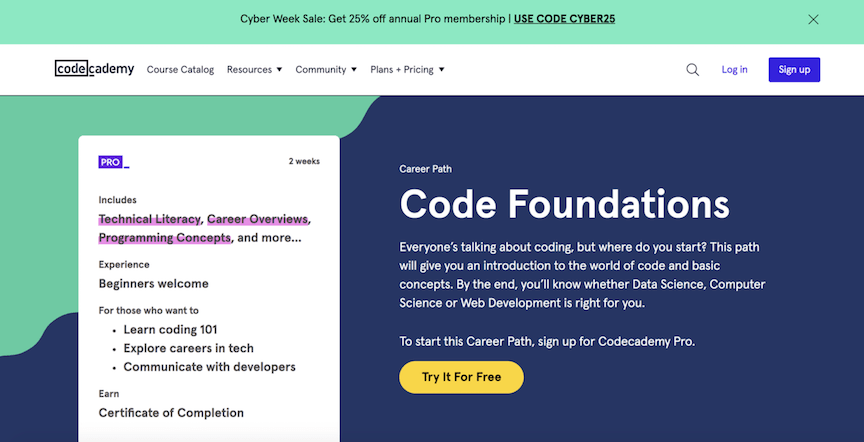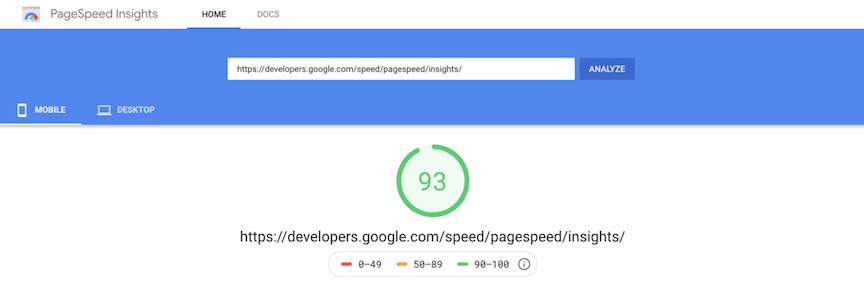-
 8 min. read
8 min. read
-
 Sarah Berry
Sarah Berry Web Marketing Consultant
Web Marketing Consultant
- Sarah Berry is a Google Analytics-certified Web Marketing Consultant at WebFX. She’s written over 400 articles on digital marketing, covering topics like SEO, CRO, and Amazon. When she isn’t polishing her Time Magazine Person of the Year Award, she’s spending time with her flock of ducks.
Are your landing pages converting? Or are users bouncing before they click on your call to action (CTA) or fill out your form? If your landing page bounce rate is higher than you’d like, this is the blog post for you.
We’ll go over seven of the most common causes of high landing page bounce rate and how to fix them. Want more digital marketing tips and tricks delivered right to your inbox? Subscribe to our email newsletters!
What is landing page bounce rate?
When a user arrives on your website and leaves before completing a second interaction, this is a bounce. Your site’s bounce rate is the percentage of sessions that included only the initial interaction. The most commonly used example of a second interaction is clicking on a link that brings the user to another page on your site.
That interaction may also be filling out a form, clicking on a CTA button, or another conversion-related action — these types of interactions are more common with landing pages. So, landing page bounce rate is the percentage of visits to a landing page or set of landing pages that didn’t result in a second interaction — meaning the user didn’t convert.
What is a good landing page bounce rate?
For some kinds of pages, a high bounce rate isn’t necessarily a bad thing. For example, a high bounce rate on a blog post might indicate the content answers the reader’s question clearly and thoroughly.
The meaning of bounce rate depends on the goal of the page. With landing pages, you typically want a low bounce rate. A low bounce rate indicates that a high percentage of users convert after they arrive at your landing page, fulfilling its goal.
So, what is a good bounce rate for a landing page? It can be helpful to compare your data to landing page bounce rate benchmarks. According to QuickSprout, the average bounce rate for landing pages is between 70% and 90%.
Analyzing your own bounce rate over time may be even more useful than landing page bounce rate benchmarks. Aim to consistently improve on your past bounce rate on landing pages.
7 top causes and how to improve high landing page bounce rate
If your bounce rate isn’t where you’d like it to be, what might the cause be? And how can you fix the issue?
Here are seven of the most common problems that cause a high landing page bounce rate and how to correct them.
1. Misalignment with the user’s expectations
One possible reason for a high bounce rate on landing pages is that the user didn’t get what they expected on the landing page. This behavior is often due to a misalignment between the text of the ad or link that brought the user to the landing page and the landing page itself. For example, say an ad offers users a list of the best new electric cars, but the landing page asks you to browse cars for sale in your area.
You might click away because the offer isn’t what you expected. To fix this issue, double-check your ad and landing page and make sure they align closely. They should cover the same topic, and the landing page should provide the user with the offer the ad text leads them to expect.
It’s also helpful to use the same or similar headline, colors, design, or imagery in your ad and landing page. These parallels can assure users they’re in the right place. This ad and landing page from SEMrush, for example, features the same image, similar copy, and the SEMrush logo.

2. Too much effort required from users
Another potential issue is that your landing page asks too much of the user. A landing page with a form that has too many input fields or one that asks for personal information too early may cause users to bounce. If a user encounters a form with a long list of the required information, they might not want to dedicate the time to fill it out.
If you haven’t established sufficient trust with the user, asking for sensitive information can cause them to click away as well. Make sure your offer is worth filling out your form or completing whichever action you want your users to take. As a general rule, only ask for the necessary information and make your forms as short and easy to fill out as you can.
3. Poor landing page design or user experience
The design of your landing page and the user experience it provides can also influence your bounce rate. If your landing page isn’t visually appealing or is hard to navigate, users might leave without converting. Typically, landing page creation tools bypass this issue by providing pre-made templates.
Users’ judgments of a website’s credibility are 75% based on its design, and users won’t want to provide their information to a website they don’t trust. Another potential issue is the design and placement of your CTA button. If your CTA button isn’t obvious, visitors may miss it.
Make your CTA button stand out from the rest of the page using colors and design and place it somewhere that’s easy to see. Also, be sure your CTA’s design or placement doesn’t make it look like an ad at first glance. On this page, the yellow used for the CTA button makes it stand out among the other less-bright colors used on the page.
Even though the button isn’t especially large, the bright color draws your eyes to it immediately. 
4. Confusing or crowded copy
Copy is another landing page element that has a significant impact on your bounce rate. If your page is overcrowded with copy or is unclear, users may get confused or frustrated, leading them to bounce from the page. Typically, you don’t need a ton of copy on landing pages, especially at the top of the page.
Start with the need-to-know information and include any helpful details further down the page. It’s important to make your copy scannable using headings, blank space, and visual elements throughout your page. Of course, you’ll also want to use proper spelling and grammar, avoid typos, and convey your message clearly.
Proofreading is essential for landing pages!
5. Slow page speed
Another common issue that hurts the bounce rate on landing pages is page speed. If your landing page takes too long to load, users might not stick around. More than 80% of users expect pages to load in three seconds or less, and reducing your page load time by just one second can result in substantial increases in conversions.
To test your load time, you can use Google’s PageSpeed Insights tool, which rates your page’s speed and offers suggestions for improving it.  There are numerous things you can do to improve your page, including:
There are numerous things you can do to improve your page, including:
- Compressing your files
- Reducing the number of redirects
- Using browser caching
- Upgrading your server
- Removing unnecessary code
If you’re not sure how to make these changes, consider investing in page speed optimization services.
6. Untargeted traffic
If users that don’t fit your target audience are ending up on your landing page, they’re not likely to convert. If your ads aren’t targeting the right keywords or users, you’ll have a high landing page bounce rate. To fix this issue, audit your PPC strategy and consider conducting more in-depth audience research.
Then, adjust your targeting and track your bounce rate to see if it improves.
7. Technical errors
If your bounce rate is abnormally high and users aren’t spending more than a few seconds on your page, the page might not be displaying correctly. Try the page on multiple types of devices and browsers and check for error messages and problems displaying the page. Try navigating to the page from your ad to see if that’s where the issue lies.
If the bounce rate is only high on mobile devices, check whether your page is mobile-friendly using Google’s Mobile-Friendly Test tool.
Our digital marketing campaigns impact the metrics that improve your bottom line.
See More Results
WebFX has driven the following results for clients:
$6 billion
In client revenue
24 million
Leads for our clients
7.14 million
Client phone calls
Take your digital marketing to the next level with WebFX
Reducing your bounce rate is key to a successful landing page. If your landing page bounce rate isn’t where it needs to be, checking for these seven issues can help you fix it. For more digital marketing tips, sign up for our email newsletters.
If you’d like help improving your landing pages, fixing issues with your PPC campaigns, or other aspects of your online marketing, request a free quote to learn more about our digital marketing services.
-
 Sarah Berry is a Google Analytics-certified Web Marketing Consultant at WebFX. She’s written over 400 articles on digital marketing, covering topics like SEO, CRO, and Amazon. When she isn’t polishing her Time Magazine Person of the Year Award, she’s spending time with her flock of ducks.
Sarah Berry is a Google Analytics-certified Web Marketing Consultant at WebFX. She’s written over 400 articles on digital marketing, covering topics like SEO, CRO, and Amazon. When she isn’t polishing her Time Magazine Person of the Year Award, she’s spending time with her flock of ducks. -

WebFX is a full-service marketing agency with 1,100+ client reviews and a 4.9-star rating on Clutch! Find out how our expert team and revenue-accelerating tech can drive results for you! Learn more
Try our free Marketing Calculator
Craft a tailored online marketing strategy! Utilize our free Internet marketing calculator for a custom plan based on your location, reach, timeframe, and budget.
Plan Your Marketing Budget

Maximize Your Marketing ROI
Claim your free eBook packed with proven strategies to boost your marketing efforts.
Get the GuideTry our free Marketing Calculator
Craft a tailored online marketing strategy! Utilize our free Internet marketing calculator for a custom plan based on your location, reach, timeframe, and budget.
Plan Your Marketing Budget





